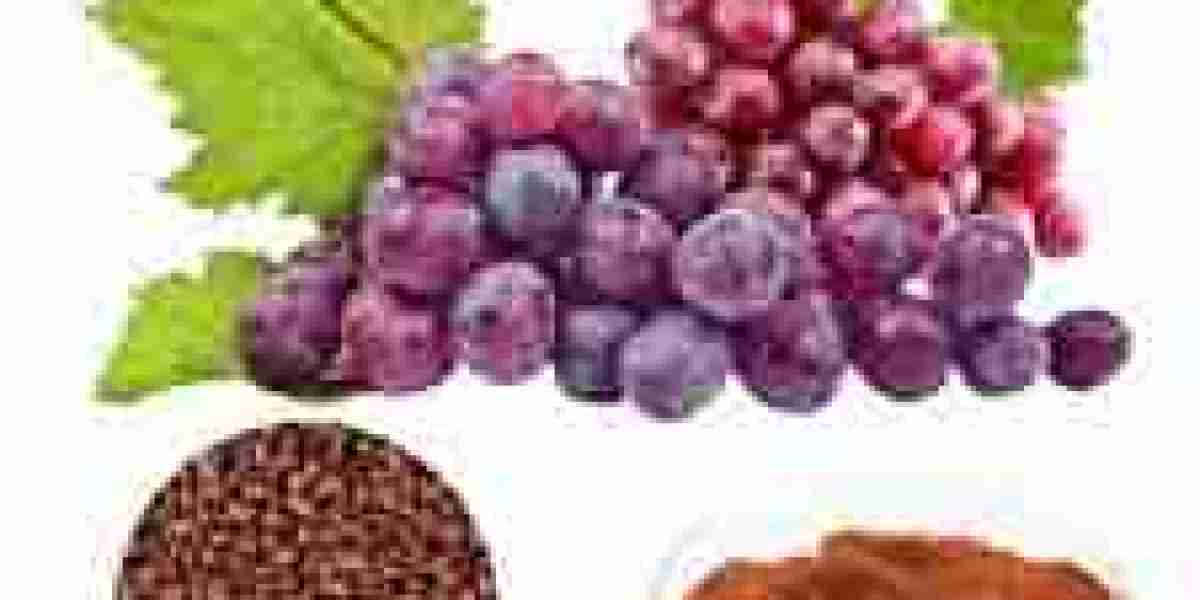The grape skin extract market is experiencing significant growth, driven by increasing consumer demand for natural, sustainable, and health-promoting ingredients. Central to this expansion are advancements in extraction technologies that enhance the efficacy and quality of grape skin-derived products. Innovative methods such as ultrasound-assisted extraction (UAE), microwave-assisted extraction (MAE), enzyme-assisted extraction (EAE), and supercritical fluid extraction (SFE) are revolutionizing the industry by improving yield, preserving bioactive compounds, and aligning with green chemistry principles.
1. Ultrasound-Assisted Extraction (UAE): Efficiency and Sustainability
UAE employs ultrasonic waves to create cavitation bubbles in the extraction medium, leading to cell disruption and enhanced mass transfer. This method significantly reduces extraction time and solvent usage while increasing the yield of phenolic compounds from grape skins. Studies have demonstrated that UAE can achieve up to a 23.76% increase in extraction yield and a 34.54% enhancement in antioxidant activity compared to conventional methods . The scalability and eco-friendliness of UAE make it a promising technology for industrial applications.
2. Microwave-Assisted Extraction (MAE): Rapid and Effective
MAE utilizes microwave energy to heat the solvent and plant matrix, accelerating the extraction process. This technique offers rapid extraction times and high efficiency in recovering polyphenols and other bioactives from grape skins. Research indicates that MAE can produce extracts with high antioxidant activity, suitable for applications in food and pharmaceutical formulations . The method's operational simplicity and reduced energy consumption contribute to its growing adoption.
3. Enzyme-Assisted Extraction (EAE): Targeted and Mild
EAE involves the use of specific enzymes, such as cellulases and pectinases, to break down cell walls and facilitate the release of bioactive compounds. This approach allows for targeted extraction under mild conditions, preserving the integrity of sensitive compounds like resveratrol. EAE is considered more sustainable than traditional methods, as it reduces the need for harsh chemicals and high-energy processes . However, challenges such as enzyme cost and process optimization remain for large-scale applications.
4. Supercritical Fluid Extraction (SFE): Clean and Selective
SFE employs supercritical fluids, typically carbon dioxide, to extract bioactive compounds from grape skins. This method offers high selectivity and efficiency, producing solvent-free extracts with preserved bioactivity. SFE is particularly advantageous for obtaining high-purity extracts for nutraceutical and pharmaceutical uses. Despite its benefits, the high initial investment and operational complexity can be barriers to widespread adoption .
5. Natural Deep Eutectic Solvents (NADES): Green Solvent Systems
NADES are emerging as environmentally friendly alternatives to conventional solvents in extraction processes. Comprising natural compounds, NADES are biodegradable, non-toxic, and capable of dissolving a wide range of bioactives. When combined with techniques like UAE, NADES enhance the extraction of phenolic compounds from grape skins, aligning with the principles of green chemistry and sustainability . The integration of NADES in extraction protocols is gaining traction in the cosmetics and food industries.
6. Market Implications and Future Prospects
The adoption of these innovative extraction technologies is reshaping the grape skin extract market by enabling the production of high-quality, efficacious products that meet consumer demands for natural and sustainable ingredients. The enhanced bioactivity and purity of extracts obtained through methods like UAE, MAE, EAE, and SFE open new avenues for applications in functional foods, dietary supplements, cosmetics, and pharmaceuticals. As research continues to optimize these technologies and address scalability challenges, the market potential for grape skin extracts is poised for significant expansion.
Production Methods
Grape skin extract is derived from the skins of grapes, a by-product of the winemaking process. Traditional extraction methods have been supplemented by innovative techniques aimed at improving yield, purity, and environmental sustainability.
1. Supercritical Fluid Extraction (SFE):
SFE utilizes supercritical CO₂ to extract bioactive compounds efficiently, offering high selectivity and preserving the integrity of sensitive phytochemicals. This method is energy-efficient and leaves no solvent residues, making it suitable for food and pharmaceutical applications.
2. Enzyme-Assisted Extraction (EAE):
EAE employs specific enzymes to break down cell walls, facilitating the release of polyphenols and other antioxidants. This method operates under mild conditions, preserving the bioactivity of the compounds and aligning with green chemistry principles.
3. Microwave-Assisted Extraction (MAE):
MAE uses microwave energy to heat the solvent and plant matrix, accelerating the extraction process. This technique reduces extraction time and solvent usage while maintaining high yields of bioactive compounds.
Applications and Market Segmentation
Grape skin extract finds applications across several industries, with its antioxidant properties being a key driver of demand.
Food and Beverage: Used as a natural colorant and preservative, grape skin extract enhances the nutritional profile of products like juices, wines, and functional foods.
Pharmaceuticals and Nutraceuticals: Rich in polyphenols such as resveratrol, the extract is incorporated into supplements aimed at promoting cardiovascular health and reducing inflammation.
Cosmetics and Personal Care: Its antioxidant and anti-aging properties make it a valuable ingredient in skincare products, including moisturizers, serums, and facial masks.
In conclusion, the convergence of technological innovation and market demand is propelling the grape skin extract industry toward a future characterized by enhanced product efficacy, sustainability, and diverse applications. Embracing these advanced extraction methods will be key for stakeholders aiming to capitalize on the growing opportunities within this dynamic market.




